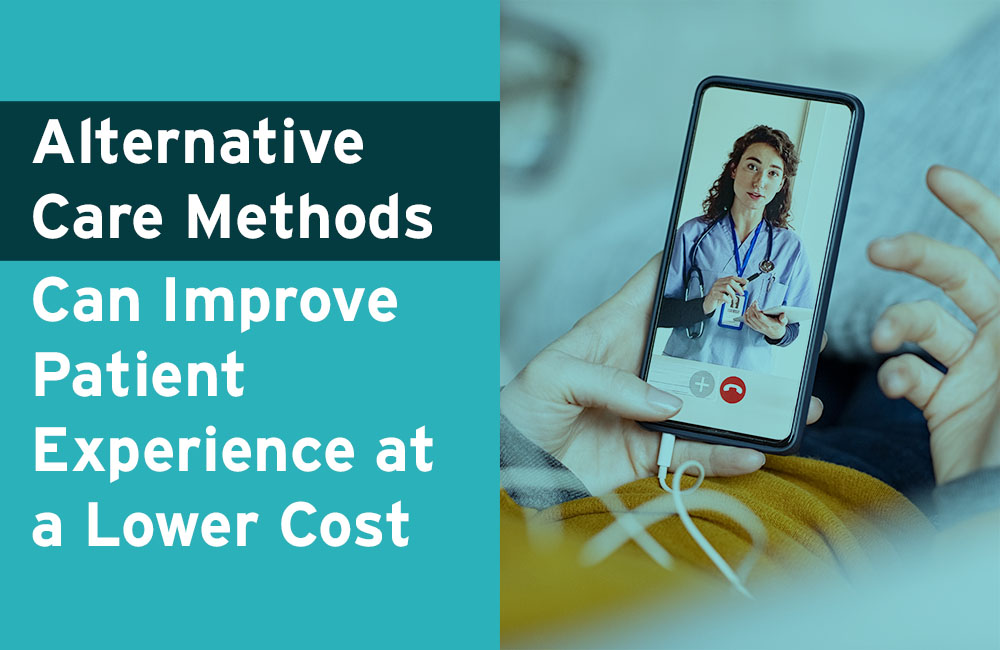
Alternative Care Methods Can Improve Patient Experience at a Lower Cost
Most people in Wisconsin receive care in a medical facility from providers employed by a hospital or health system but there are alternative care methods available. Utilizing alternative care options like independent primary care, telehealth options, and bundled services can improve care quality, patient experience and outcomes while reducing the cost of care.
Independent Primary Care
Independent physicians like Anovia Health. External Link. Opens in new window. and Dedicated Family Care. External Link. Opens in new window. choose to provide care outside of a major hospital or health system. They have the flexibility to schedule their own appointments. This allows them to spend time with each patient, helping them understand their health and encouraging them to take an active role in improving or maintaining their well-being.
Most people want to be involved in their care. Evidence shows that when people actively participate in their care, they experience better outcomes.. External Link. Opens in new window. By utilizing preventative care with a primary care physician, people can catch issues before they become dangerous and more difficult and expensive to treat. This can lead to lower healthcare costs for employees and their self-funded employers.
Seeing an independent provider can also manage the number of appointments, tests and procedures a patient undergoes. Independent physicians can call specialists and consult when they need a second opinion without the patient making an additional appointment and paying for an office visit. This saves patients out-of-pocket costs and leaves specialists the bandwidth to treat people who urgently need their care.
Receiving care from independent providers gives patients the power of choice. Instead of being referred directly to providers within a health system for specialist appointments, procedures, or services, independent providers can provide options for high-value (high-quality, low-cost) providers which save the patient, and their self-funded employers, money.
Telehealth
In the past, patients had to go to a physical office to see their healthcare provider in person. Telehealth services, including virtual primary care, allow patients to see their provider “face-to-face” from anywhere. Virtual care options offer appointments outside of traditional office hours with some services providing 24/7 access to care and same-day appointments. Accessing care this way can shorten commute and wait times. This reduces the amount of time needed off work for medical appointments.
Virtual health company AkosMD. External Link. Opens in new window. offers innovative, convenient and cost-effective healthcare solutions, including virtual primary care. They created a network of independent board-certified medical professionals who provide flexible care on their terms. In addition to physical health concerns, virtual care is available for behavioral health. DotCom Therapy, Inc.. External Link. Opens in new window. makes pediatric mental health, speech, and occupational therapy services more accessible and affordable by providing high-quality virtual sessions. Telehealth can be a convenient option for people who need appointments outside normal office hours or are more comfortable doing therapy sessions in the comfort of their home.
Bundling for Episodes of Care
Bundling prices for episodes of care can facilitate higher quality care, better patient experience, and lower cost. Value-based healthcare companies like Holista. External Link. Opens in new window. are providing single-point solutions for common, shoppable procedures like knee replacements that include multiple charges for related services. Instead of being billed for each service separately, bundling allows patients to know their costs upfront and receive one statement for the episode of care.
When self-funded employers work with companies to negotiate bundled payments for episodes of care, their employees get access to high-quality care at a more affordable cost. Designing benefit plans with incentives for pre-and-post-procedure compliance can also improve patient outcomes beyond traditional pricing structures.
Incentivizing Alternative Care Methods
Many people access care from providers within a hospital or health system because it is familiar to them. If employers want their employees to consider alternative care options, education is crucial. Employers can incentivize their employees to seek care through alternative methods by educating them on the benefits, offering paid time off for medical appointments, or providing vouchers for transportation to see a high-value provider. Another option is to provide incentives for biometric screenings or wellness activities which reward healthy lifestyle choices and preventative measures. Employers who want to encourage their employees to be smart healthcare consumers must share their savings with employees so both reap the benefits when employees choose a high-value provider – a well-designed incentive means everyone saves.
Working Together for Better Healthcare
Alternative care options are evolving as independent physicians, telehealth services, and value-based healthcare companies learn how to work with each other and with hospital systems to provide the best possible care for patients.
Independent physicians and virtual service providers need to be integrated with the medical community in order to have access to the resources necessary to stay relevant in the marketplace. They need to have up-to-date technology, knowledge databases, and administrative support to provide quality care. One way independent physicians are working together is by joining Independent Physician Associations (IPAs). These associations negotiate and contract with payors on behalf of independent physicians. This way, physicians can be paid a fair price for their services and patients can pay a reasonable price for their treatment. When providers work with value-based healthcare companies to bundle payments for episodes of care, it can further incentivize patients to utilize their services for shoppable procedures.
Alternative care options are an important part of the healthcare landscape. Using alternative care methods as a tool in the healthcare toolkit can facilitate high-quality care and better patient experience and outcomes. To learn more about alternative care methods, watch the recap of our Fall Symposium and Annual meeting. To determine how The Alliance can help you guide your employees to high-value care, please contact us.








